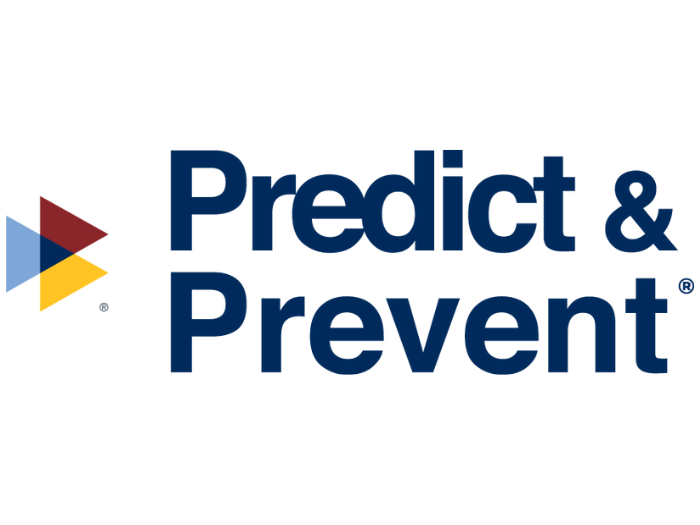Direct-to-Consumer Insurance Appeals to Commercial Buyers and Carriers, but One Size Does Not Fit All

Traditionally, insurers have relied on selling coverage through their trusted networks of brokers.
But now, the market is slowly but surely starting to change.
Carriers and aggregator comparison websites have been selling their personal auto, property and travel insurance policies direct to consumers online almost since the advent of the internet — a trend that accelerated during COVID-19, as consumers made more purchases online and Insurtechs such as Lemonade and Hippo grew in popularity.
That model is now gaining some traction in the commercial market, particularly in professional liability, general liability, property and cyber for small businesses. Yet uptake so far has been slow, and there are only a handful of providers out there.

Alan Murray, associate director, AM Best
Alan Murray, associate director at AM Best, believes that the direct-to-consumer (DTC) model has the potential to significantly reshape the commercial sector, from the type of products sold to the way they are bundled, as well as how the products are distributed and the role that agents and brokers will play.
“The approach of some of the major commercial insurers has generally been incremental, not so much through a break with the traditional agency/broker model but through attempts to automate data collection and underwriting decision-making in a way that enables the agency base to enhance its efficiency by automating otherwise time-consuming processes,” said Murray.
“Many agencies appear to be content to receive smaller commissions on small commodity-like business in exchange for greater opportunity to focus their time and efforts on growing their book of business and pursuing higher-margin opportunities.”
To this end, Murray said commercial insurers have made significant inroads in devising underwriting engines with direct data feeds that can process small-account policies with minimal or no human intervention.
He added that these tend to be commercial package products and related coverages (such as workers’ compensation) for generally lower-hazard insureds, where loss experience tends to be highly predictable or at least modellable and there’s little or no need for coverages to be customized.
Key Benefits of DTC
There are some key advantages to using DTC. Namely, it simplifies and makes the pricing, quotation and buying process more efficient, without the need for or the added cost of a middleman.
It also enables the carrier to gather more insightful data on the customer to help them understand their insurance needs, buying behaviors and other preferences — all of which helps the carrier respond accordingly with the right solution.
In addition, it informs them which specific consumers to target with products, as well as identifying opportunities to cross-sell and upsell or build brand loyalty.
Aside from the benefits, there are significant challenges involved with its implementation on technological, legal and operational levels.
The biggest one for established carriers remains the potential for sales channel conflict and the risk of alienating their agency/broker distribution platform.
There are also regulatory hurdles to overcome that make the transition to DTC increasingly difficult. This is because each state has its own requirements and limitations on how carriers engage in marketing, underwriting and ratemaking.
“Depending on their states of operation, an insurer’s ability to leverage the DTC model may be constrained,” said Murray.
“Operationally, too, the obstacles are significant. For example, the process of quoting, binding and issuing coverages that may reside in different organizational departments presents challenges that only a handful of insurers have today.”
The need to invest heavily in technology that provides a hassle- and glitch-free customer experience is another imperative, as is the ability to anticipate customer needs. When successful, that will ensure a seamless customer journey from the underwriting and quotation stage through to policy issuance, billing and renewals, as well as claims.
Early Pioneers
Hiscox has been one of the pioneers of the DTC model, launching the first online DTC business insurance platform in the U.S. in 2010. It has already made big inroads into the market, currently insuring around 600,000 of the country’s 33 million small businesses.
The company moved its DTC customers over to a new technology platform in June 2022, and it reported insurance contract written premiums growth of 6.8% for the three months ending March 31, 2023.
It has also experienced double-digit growth in new business and expects that trend to continue as it makes further investment in its customer acquisition marketing.
Regine Fiddler, head of direct and chief marketing officer at Hiscox USA, said there are currently four key trends driving the DTC market. In these tough economic times, she said, consumers want an easy-to-use and personal service and may even expect insurers to know their preferences.
Secondly, they are demanding honesty and are making their feelings known to big brands on social media and review sites, ensuring they deliver on their promises and checking that every customer touchpoint is authentic.
Digital-savvy consumers also expect functionality and are apt to measure brands by how intuitive their online journey is by weighing factors such as friendly language.
Lastly, they are no longer willing to wait for the service and want instant results and purchases.
“To expand a DTC channel, it takes constant investment in the key components of growth — brand, lifecycle marketing, data analytics, technology and user experience,” said Fiddler. “Consumers are outpacing the rate at which carriers digitally transform their operating model, even switching insurers if their digital needs are not met.”
Rather than completely replacing the need for human touchpoints, Fiddler said, DTC will make the broker’s role more valuable, given that some customers prefer guidance and human expertise to help them through the insurance-buying or claims process.
As the DTC market diversifies, the broker will become even more important in guiding customers through the available options, she said.
“Whether using a broker or going direct, carriers have to make it super easy for customers to understand the policy language,” said Fiddler. “They also have to use technology to make the claims process clear, with step-to-step updates, setting the expectation for the customer on when their claim will be processed.”
But DTC isn’t without its flaws. Edward Lukatsky, CEO of New England Insurance Group, argued that it may not provide the coverage that the customer needs and won’t necessarily get them the best possible outcome in the claims process.

Edward Lukatsky, CEO, New England Insurance Group
“The DTC model is very much a one-size-fits-all approach,” he said. “The carrier can provide you with certain types of coverage, but it may not necessarily be the one you need.
“The difference is that the carrier is working for themselves, whereas the broker is working for their client. The broker is able to understand what their clients’ wants and needs [are] and go out and secure the right coverage for them — and then also advocate on their behalf when there is a claim.”
In the future, those insurers already in the DTC market or joining it now will have to focus on keeping the online buying process smooth and simple by making it easier to bundle policies or cover emerging risks that consumers are worried about. They also need to ensure it is a reassuring and stress-free experience. &










